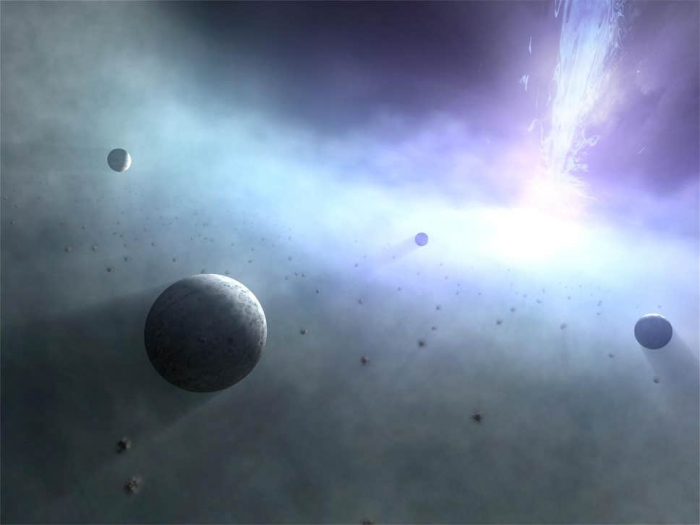Astronomers have long wondered how the gigantic gravitational singularities could have grown so large so soon after the universe began – in a matter of only hundreds of millions of years – at the same time as the galaxies around them were also able to form.
Now, by analysing the cores of more than two dozen galaxies as they appeared some 12.5 billion years ago, they think they have found the answer.
The researchers, writing in The Astrophysical Journal, say the “food stashes” that powered the young universe have turned out to be enormous reservoirs of hydrogen.
After surveying 31 quasars they found 12 surrounded by the dense, cool clouds of gas which constituted “the perfect food source” for black holes.
Quasars are the intensely bright collections of swirling matter thought to surround supermassive black holes at the centre of some galaxies. While easily spotted due to their luminance, the cool gas clouds surrounding their galaxies are more difficult to see.
The scientists used the Muse attachment of the European Southern Observatory’s Very Large Telescope to make their observations.
Dr Emanuele Paolo Farina, of the Max Planck Institute for Astronomy in Germany, said: “The presence of these early monsters, with masses several billion times the mass of our sun, is a big mystery.
“We are now able to demonstrate, for the first time, that primordial galaxies do have enough food in their environments to sustain both the growth of supermassive black holes and vigorous star formation.
“In a matter of a few hours per target, we were able to delve into the surroundings of the most massive and voracious black holes present in the young universe.
“While quasars are bright, the gas reservoirs around them are much harder to observe.
“But Muse could detect the faint glow of the hydrogen gas in the halos, allowing astronomers to finally reveal the food stashes that power supermassive black holes in the early universe.”
The Independent
More about: blackholes
















































